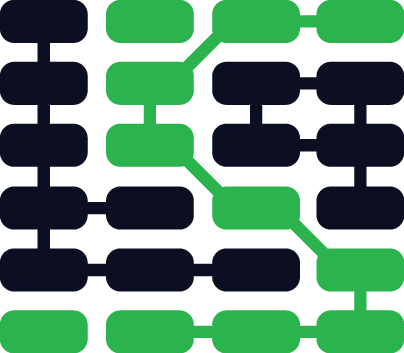NoSQL Data Stores
Relational databases store the vast majority of web application persistent data. However, there are several alternative classifications of storage representations.
- Key-value pair
- Document-oriented
- Column-family table
- Graph
These persistent data storage representations are commonly used to augment, rather than completely replace, relational databases.
Document-oriented
A document-oriented database provides a semi-structured representation for nested data.
Document-oriented data stores
-
MongoDB is an open source document-oriented data store with a Binary Object Notation (BSON) storage format that is JSON-style and familiar to web developers.
-
Riak is an open source distributed data store focused on availability, fault tolerance and large scale deployments.
-
Apache CouchDB is also an open source project where the focus is on embracing RESTful-style HTTP access for working with stored JSON data.
Key-value Pair
Key-value pair data stores are based on hash map data structures.
Key-value pair data stores
- Redis is an open source in-memory key-value pair data store. Redis is often called "the Swiss Army Knife of web application development." It can be used for caching, queuing, and storing session data for faster access than a traditional relational database, among many other use cases.
Column-family table
A the column-family table class of NoSQL data stores builds on the key-value pair type. Each key-value pair is considered a row in the store while the column family is similar to a table in the relational database model.
Column-family table data stores
Graph
A graph database represents and stores data in three aspects: nodes, edges, and properties.
A node is an entity, such as a person or business.
An edge is the relationship between two entities. For example, an edge could represent that a node for a person entity is an employee of a business entity.
A property represents information about nodes. For example, an entity representing a person could have a property of "female" or "male".
Graph data stores
- Neo4j is one of the most widely used graph databases and runs on the Java Virtual Machine stack.
NoSQL third-party services
- MongoHQ provides MongoDB as a service. It's easy to set up with either a standard LAMP stack or on Heroku.
NoSQL data stores resources
-
NoSQL Weekly is a free curated email newsletter that aggregates articles, tutorials, and videos about non-relational data stores.
-
NoSQL comparison is a large list of popular, BigTable-based, special purpose, and other datastores with attributes and the best use cases for each one.
-
MongoDB for startups is a guide about using non-relational databases in green field environments.
NoSQL data stores learning checklist
Understand why NoSQL data stores are better for some use cases than relational databases. In general these benefits are only seen at large scale so they may not be applicable to your web application.
Integrate Redis into your project for a speed boost over slower persistent storage. Storing session data in memory is generally much faster than saving that data in a traditional relational database that uses persistent storage. Note that when memory is flushed the data goes away so anything that needs to be persistent must still be backed up to disk on a regular basis.
Evaluate other use cases such as storing transient logs in document-oriented data stores such as MongoDB.
What's next?
NoSQL Data Stores
Need more detailed tutorials and walkthroughs than what is presented here? Sign up for an email alert when that content is created.
Matt Makai 先生在社区的协助下设计并编写了这个站点。如果你有Github账号,可以 follow他哦。想跟近这本书的最新状态去Github Star 这个项目吧!

